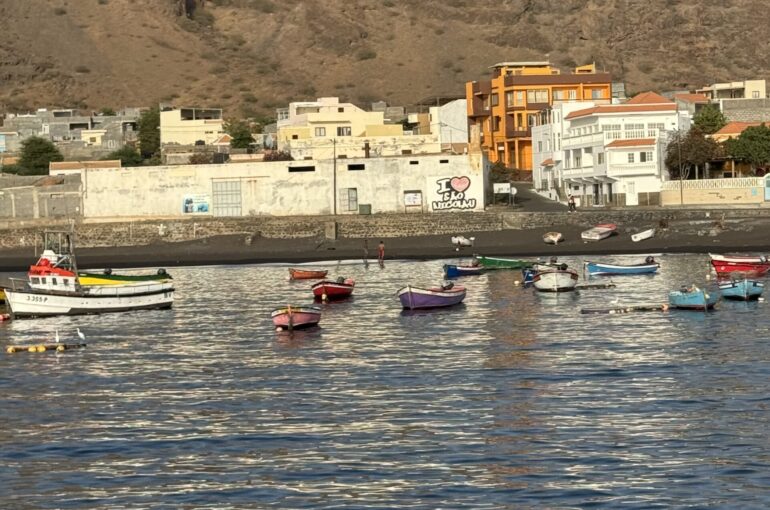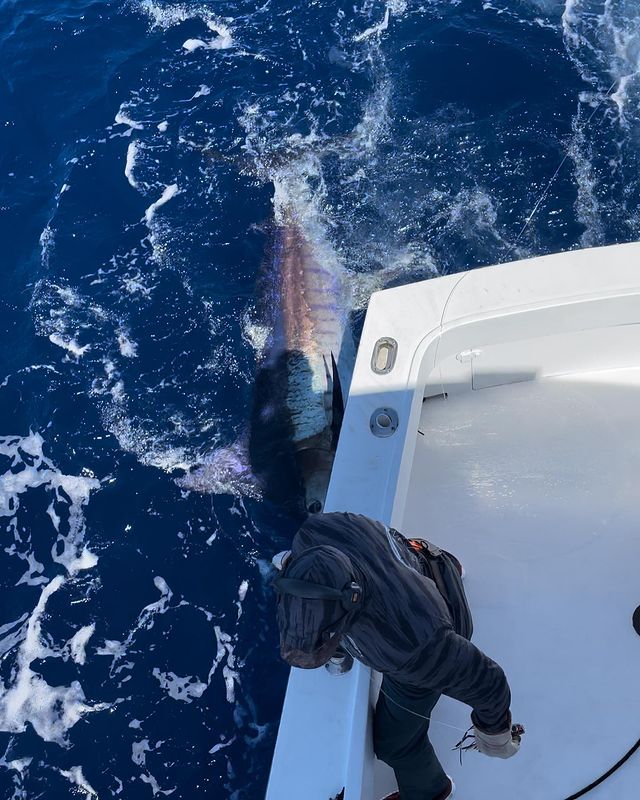Cape Verde Fishing Seasons

Cape Verde Fishing Seasons
Cape Verde is a fishing paradise all year round, but understanding the seasonal movements of its prized gamefish can make the difference between a good trip and a great one. Whether chasing trophy blue marlin, going after powerful tuna, or hoping for fast-paced action with wahoo and dorado, timing your trip based on the Cape Verde fishing seasons is the most innovative way to maximize success.
Located off the northwest coast of Africa, the Cape Verde archipelago is perfectly positioned in the eastern Atlantic Ocean, where deep waters, strong currents, and warm temperatures converge. These natural factors create a rich marine environment supporting some of the world’s most exciting sport fishing. But even in a place as consistent as Cape Verde, the fishing changes from season to season. Certain months bring specific species closer to shore, while others signal migration or spawning patterns that affect how and where to fish.
Planning a fishing trip to Cape Verde isn’t just about picking a boat or choosing an island. It’s also about knowing when to go. This guide breaks down the prime fishing seasons for each major gamefish and explains how seasonal conditions shape the fishing experience in Cape Verde.
The Blue Marlin Season: March to July
Cape Verde is known worldwide for its incredible blue marlin fishing, and the peak season for this majestic predator runs from March through July. During these months, the ocean conditions are ideal warm surface temperatures, clean blue water, and abundant baitfish make the area a magnet for marlin.
The blue marlin here is enormous. Fish over 500 pounds are caught regularly, and 800- to 1,000-pound specimens are not unheard of. What makes the marlin season truly special is the consistency. Experienced captains often report multiple marlin strikes in a single day, especially in May and June, which are widely considered the best months for marlin fishing in Cape Verde.
The prime marlin grounds are close to the islands of São Vicente, Santo Antão, and São Nicolau, where underwater canyons and steep drop-offs create perfect hunting zones. This proximity to deep water means less travel time and more time fishing. Boats like Miss Angela, which operate from the port of Mindelo, are ideally positioned to take full advantage of the action.
During the height of marlin season, anglers use trolling techniques with large skirted lures, often paired with teasers and switch-baits to provoke strikes. The bites can be explosive, and the fights are long, usually lasting an hour or more. If you’re booking a trip specifically for blue marlin, the period from late April to early July offers the highest probability of success.
Tuna Fishing: February to May and September to November
Tuna are present in Cape Verde’s waters for much of the year, but the best seasons for targeting large yellowfin and bigeye tuna are late winter through spring and again in the fall. From February to May, then again from September to November, ocean conditions bring large schools of tuna close to shore, feeding on baitfish along current lines and near seamounts.
Yellowfin tuna in Cape Verde can reach impressive sizes, with fish weighing between 50 and 200 pounds commonly caught. These fish travel in schools and can be targeted with trolling lures, live bait, or topwater techniques when feeding near the surface. Bigeye tuna, which prefer deeper water, are usually targeted by trolling or deep jigging.
Tuna fishing offers a different kind of thrill compared to marlin. These fish are strong, fast, and relentless, often taking anglers deep into their reel’s backing. Tuna are also prized for their eating quality, making them a popular catch for those looking to combine sport and table fare.
Fishing for tuna can be unpredictable and fast-paced. The key to success is mobility and sharp awareness skills that local charter crews have perfected. Whether you’re after sashimi-grade yellowfin or a hard-fighting bigeye, the transitional seasons in Cape Verde are your best bet.
Wahoo Season: January to April
Wahoo are another prized target in Cape Verde, and they are most abundant during the first few months of the year. These sleek, toothy fish gather near the islands from January through April, offering fast strikes and exciting fights.
Wahoo are known for their speed, and once hooked, they often make blistering runs that test both angler skill and equipment. They’re typically caught by high-speed trolling, using lures rigged with wire leaders to prevent bite-offs. Average sizes range from 20 to 60 pounds, though larger specimens are not uncommon.
Because wahoo tend to feed near reefs, ledges, and drop-offs, they can be targeted fairly close to shore, making them an excellent option for half-day trips or as a bonus species during a more extended offshore expedition. Their aggressive feeding behavior and sharp instincts make them a fun challenge for anglers of all experience levels.
Dorado and Sailfish: May to October
From late spring into early fall, dorado (also known as mahi-mahi) and sailfish make their seasonal appearance in Cape Verde’s offshore waters. These species tend to show up when warm water temperatures, usually from May through October.
Dorado are highly visual predators that often feed near the surface. Their striking colors and acrobatic fights make them a favorite among anglers. They’re also excellent on the grill, making them a great catch for those looking to enjoy fresh seafood after a day on the water.
Sailfish, while less common than blue marlin, are also caught during this warm-water season. They are smaller than marlin but put up an exciting aerial fight. Sailfish can be seen using trolling or live-bait methods, often in the same waters where marlin are targeted.
These species are ideal for anglers looking for variety or families looking for action-packed fishing with slightly less intense physical demand than battling a giant marlin or tuna.

Best All-Around Months for Mixed Species Action
If your goal is to catch a bit of everything marlin, tuna, wahoo, dorado, and more the months of April, May, and June offer the best species overlap. During this time, marlins are at their peak, tuna is still present, and the occasional wahoo or dorado adds extra excitement.
The weather during these months is also ideal for fishing. The sea tends to be calm, trade winds are steady but manageable, and water clarity is high. These months offer some of the longest daylight hours of the year, giving anglers plenty of time to fish from sunrise to late afternoon.
Fishing during these crossover months also increases the odds of surprise encounters, where an angler trolling for marlin might suddenly hook into a yellowfin tuna or wahoo. The kind of unpredictability that makes Cape Verde one of the most exciting fisheries in the world.
Weather Considerations and Off-Season Fishing
Cape Verde enjoys a tropical climate with little rainfall and plenty of sunshine, but seasonal trade winds known as the Harmattan can affect sea conditions. From December through February, these dry winds can create rougher seas and reduced visibility, which may impact offshore trips. Fishing is still possible, especially for species like wahoo and tuna that don’t mind the choppier conditions.
There’s no actual “off-season” in Cape Verde. Even in the quieter months of August, September, and early December, boats still go out, and fish are still caught. These months may not have the same density of big marlin or tuna, but they offer quieter waters, less competition from other anglers, and a more laid-back fishing experience.
The off-peak months can be perfect for those looking to enjoy the island atmosphere, spend time with family, and enjoy quality fishing without chasing trophies.
Final Thoughts: Cape Verde Fishing Seasons
Cape Verde’s location, climate, and marine environment create one of the world’s most reliable and exciting fishing destinations. But just like any great fishery, the key to success lies in understanding its seasonal patterns. Whether planning your trip around Cape Verde’s marlin season, hoping to hook hard-running tuna in the spring, or targeting wahoo and dorado during the winter and summer, knowing when to go can make all the difference.
With expert charter crews, deep bluewater close to shore, and a calendar full of fishing opportunities, Cape Verde is ready for anglers at any time of year. If you’re looking for the ideal mix of tropical adventure and world-class fishing, there’s no wrong time to visit just better times to target specific species.


